Have you ever marveled at the simple joy of collecting fresh eggs from your own backyard? The charm of watching your flock roam, peck, and contribute to your breakfast table is a delight shared by many across the globe. With the growing trend towards sustainable living, the popularity of raising backyard chickens has soared, turning many into proud poultry keepers in pursuit of that perfect, fresh egg.
But what makes the “best” egg-laying chicken? The answer is as varied as the breeds themselves. Whether it’s the number of eggs, the color of the shell, or even the temperament of the hens, the ideal chicken breed for one person might not be the same for another. “Best” is subjective and heavily dependent on individual needs, preferences, and the environment these chickens will call home.
In this exploration of the best egg-laying chickens, we aim to uncover the layers (pun intended) of what makes a breed stand out for backyard farmers and hobbyists alike. Whether you’re an experienced chicken keeper or considering starting your flock, understanding the nuances of each breed can help you make informed decisions that align with your egg-spectations.
Factors to Consider When Choosing Egg-Laying Chickens
When embarking on the rewarding journey of raising backyard chickens for eggs, several key factors come into play to ensure you select the breeds best suited to your needs and environment. From egg production capabilities to the birds’ temperament and care needs, each aspect plays a crucial role in crafting the ideal backyard flock.
Egg Production
- Average Number of Eggs Per Year: Different breeds can vary significantly in their productivity. For instance, White Leghorns are known for their prolific output, often exceeding 300 white eggs per year, while Rhode Island Reds produce around 250 to 300 brown eggs annually.
- Frequency of Laying: Some breeds lay almost daily, while others might have a more sporadic laying schedule. Knowing the laying patterns can help manage expectations and egg supply.
- Egg Size and Color Variations: Beyond quantity, egg characteristics matter. Breeds like the Araucana produce distinctive blue or green eggs, adding a splash of color to your egg basket, while others, such as the Sussex or Plymouth Rock, offer large, brown eggs.
Temperament
- Docility and Handling: Breeds like the Silkie and Cochin are known for their gentle nature, making them ideal for families with children or for those seeking a more interactive experience with their chickens.
- Friendliness Towards Other Chickens and Predators: Understanding the social dynamics of different breeds can help prevent conflicts in the coop. Some breeds have a more dominant demeanor, which might require careful integration into mixed flocks.
Climate
- Breeds Suited for Hot or Cold Weather Conditions: Certain breeds thrive in specific climates. For instance, the Leghorn excels in warmer climates, while the Chantecler is bred for cold weather, showcasing remarkable hardiness in winter.
- Hardiness and Tolerance for Harsh Winters: Beyond breed selection, considerations for climate adaptation may also influence housing and care practices to ensure the well-being of your flock through all seasons.
Care Requirements
- Feeding Needs and Dietary Considerations: A balanced diet is critical for health and productivity. High-producing breeds may require feed with higher protein content to sustain their egg production.
- Space Requirements and Coop Size Recommendations: Adequate space for roaming and exercise is essential. Overcrowding can lead to stress, pecking, and health issues among chickens.
- Health Concerns and Susceptibility to Diseases: Some breeds are more resilient to ailments than others. Familiarizing yourself with potential health issues and preventive measures can keep your flock thriving.
Other Factors
- Noise Level and Potential for Crowing: While hens are generally quieter than roosters, some breeds are more vocal than others. Noise levels can be a significant consideration in urban settings.
- Dual-purpose Breeds: Breeds like the Orpington or the Plymouth Rock offer the benefit of both egg production and meat, providing a versatile option for homesteaders.
- Availability of Chicks or Adult Chickens in Your Area: Finally, the accessibility of specific breeds can influence your choices. Local breeders, hatcheries, and poultry farms can be valuable resources for starting and expanding your flock.
Selecting the right chicken breeds for egg production involves balancing these factors with your personal preferences, lifestyle, and the environment you can provide. By considering each of these aspects, you can ensure a fulfilling and productive backyard chicken-keeping experience.
Top Breeds for Egg Laying
Raising chickens for eggs is a rewarding experience, especially when you have the right breeds in your coop. Here are some top performers known for their exceptional egg production, along with a brief overview of each breed’s characteristics.
1. White Leghorn

- Origin and History: Originating from Italy, White Leghorns are a classic breed known for their prolific egg-laying abilities.
- Average Egg Production and Characteristics: They can lay over 300 white eggs per year. The eggs are medium to large in size.
- Temperament and Suitability: Leghorns are hardy, energetic, and prefer to forage. They do well in various climates but thrive in warmer conditions.
- Care Requirements: They are relatively low-maintenance but need space to roam.
2. Rhode Island Red
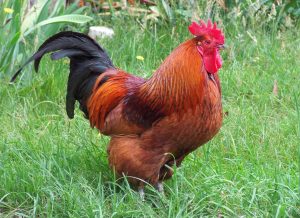
- Origin and History: Developed in the United States, this breed is known for its hardiness and versatility.
- Average Egg Production and Characteristics: Expect around 250-300 large brown eggs per year from a single hen.
- Temperament and Suitability: They have a friendly and easygoing temperament, making them suitable for backyard flocks.
- Care Requirements: They are adaptable to a wide range of environments and are generally robust, with few health issues.
3. Sussex

- Origin and History: Hailing from England, Sussex chickens are appreciated for their dual-purpose qualities.
- Average Egg Production and Characteristics: Sussex hens produce about 250 eggs per year, which can be white, cream, or light brown.
- Temperament and Suitability: They are calm and friendly, good for families, and adapt well to confinement or free range.
- Care Requirements: Sussex chickens are not particularly prone to any specific health issues and are easy to care for.
4. Plymouth Rock
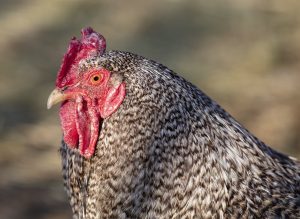
- Origin and History: This American breed is known for its distinctive barred feathers and dual-purpose utility.
- Average Egg Production and Characteristics: They lay about 200 large brown eggs annually.
- Temperament and Suitability: With their docile and friendly nature, they are perfect for family coops.
- Care Requirements: They are hardy, but like all chickens, they benefit from a clean coop and a balanced diet.
5. Hy-Line Brown
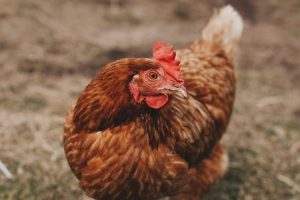
- Origin and History: A modern hybrid designed for high egg production, Hy-Line Browns are a favorite in both commercial and backyard settings.
- Average Egg Production and Characteristics: They can lay up to 300 brown eggs per year.
- Temperament and Suitability: Known for their hardiness and efficiency, they adapt well to different climates and housing systems.
- Care Requirements: They require standard care but efficient feeding to sustain their high production levels.
Additional Tips for Raising Egg-Laying Chickens
Successful chicken keeping requires more than just selecting the right breeds. Here are some tips for ensuring your flock is healthy, happy, and productive:
- Coop Setup: Ensure your coop is spacious, well-ventilated, and predator-proof. Each chicken should have enough space to roost comfortably.
- Feeding: Provide a balanced diet rich in protein, especially during laying periods. Access to clean water at all times is crucial.
- Health Care: Regularly check your chickens for signs of illness or distress. Keep the coop clean to prevent disease and parasites.
- Resources: Utilize resources such as local poultry clubs, online forums, and agricultural extension services for advice and support.
- Responsible Ownership: Treat your chickens with care and respect. Consider their welfare in your daily management practices to ensure a healthy, productive flock.
By adhering to these guidelines and dedicating yourself to learning about and caring for your chickens, you can enjoy the numerous benefits of raising egg-laying chickens. Whether you’re a novice or an experienced chicken owner, the journey of backyard chicken keeping is both enriching and rewarding.
Conclusion
In our journey through the world of backyard poultry keeping, we’ve uncovered that the quest for the best egg-laying chickens is a personal adventure, influenced by a variety of factors including egg production, breed temperament, climate resilience, and care requirements. From the prolific White Leghorn to the hardy Rhode Island Red, each breed presents its own set of attributes and challenges, underscoring the importance of matching these characteristics with your specific needs and environment.
Choosing the right chicken breed(s) for your backyard coop is a decision that merits thoughtful consideration and research. Factors such as your local climate, the space you can provide, and your expectations for egg production and breed interaction should guide your selection process. Remember, the “best” breed is the one that aligns most closely with your lifestyle, your backyard environment, and your goals for raising chickens.
I encourage you to delve deeper into the fascinating world of each breed, seek advice from experienced chicken keepers, and utilize the wealth of knowledge available in books, online forums, and poultry enthusiast groups. Your efforts will not only ensure a harmonious match between you and your feathered friends but also enrich your experience as a poultry keeper.
Raising chickens for fresh eggs is more than just a hobby; it’s a step towards a more sustainable and rewarding way of living. The joys of collecting fresh eggs, understanding the unique personalities of your chickens, and contributing to a more self-sufficient lifestyle are experiences that far outweigh the challenges. As you embark on or continue your chicken-keeping journey, remember that the true beauty of raising chickens lies in the connection to nature, the education in responsibility and sustainability, and the simple pleasures of watching your flock thrive. Here’s to the delightful adventure of backyard chicken keeping and the bountiful, fresh eggs that await.
Bonus: Enhancing Your Chicken-Keeping Experience
To further aid in your decision-making process, here’s a concise table comparing the egg production, temperament, and care requirements of the top chicken breeds mentioned. Additionally, we’ll explore tips for integrating chickens into gardens or urban spaces and address common misconceptions about raising chickens.
Comparative Table of Top Egg-Laying Breeds
| Breed | Egg Production (per year) | Egg Color | Temperament | Care Requirements |
|---|---|---|---|---|
| White Leghorn | 280-320 | White | Active, Somewhat shy | Low-maintenance |
| Rhode Island Red | 250-300 | Brown | Friendly, Easygoing | Robust, Adaptable |
| Sussex | 250 | White/Cream | Calm, Friendly | Easy, Cold-tolerant |
| Plymouth Rock | 200 | Brown | Docile, Social | Hardy, Low-maintenance |
| Hy-Line Brown | 300 | Brown | Hardy, Efficient | Standard, Efficient |
Tips for Integrating Chickens into Gardens or Urban Spaces
- Use Chickens for Pest Control: Allow chickens to roam in your garden to naturally control pests. Their pecking helps remove bugs and aerate the soil but monitor to prevent damage to plants.
- Composting Chicken Manure: Chicken manure is excellent for composting and enriching garden soil. Ensure it’s properly composted to avoid burning plants with the high nitrogen content.
- Designate a Chicken Area: In urban settings, create a designated area for your chickens to roam that’s safe and secure. Use fencing to protect both chickens and garden areas.
- Check Local Regulations: Always check your city’s regulations regarding backyard chickens, including limits on the number of hens and distance from neighbors.
Addressing Common Misconceptions
- Noise Levels: Hens are relatively quiet. While roosters can be loud, many urban areas allow only hens, which significantly reduces noise concerns.
- Smell: Properly maintained coops do not emit strong odors. Regular cleaning of bedding and proper ventilation keep smells in check.
- Health Risks: With regular care and clean living conditions, chickens pose minimal health risks. Practice good hygiene, like washing hands after handling chickens or eggs.
Raising chickens can be a fulfilling part of urban or suburban living, contributing positively to a sustainable lifestyle. By dispelling myths and understanding the practical aspects of chicken care, you can enjoy the myriad benefits of backyard poultry keeping, from fresh eggs to the joy of connecting with nature in your own backyard.
Recommended Products for Chicken Keepers
Coop Accessories and Essentials

Automatic Chicken Coop Door: Enhance security and convenience with an automatic door that opens at dawn and closes at dusk, ensuring your chickens are safe without manual effort every day.
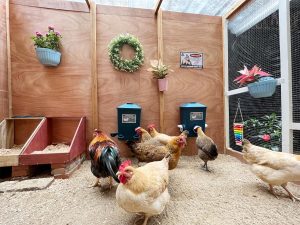
Chicken Waterer and Feeder Set: These durable, easy-to-clean feeders and waterers are designed to keep your chickens well-fed and hydrated with minimal waste and maintenance.
Egg Collection and Care
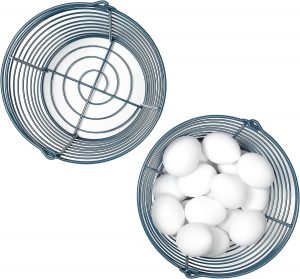
Egg Collecting Basket: A sturdy and breathable basket designed for safely collecting and transporting your fresh eggs from coop to kitchen.
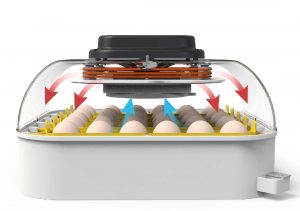
Egg Incubator: For those interested in hatching their own chicks, a reliable incubator can provide the controlled environment needed for successful egg hatching.



